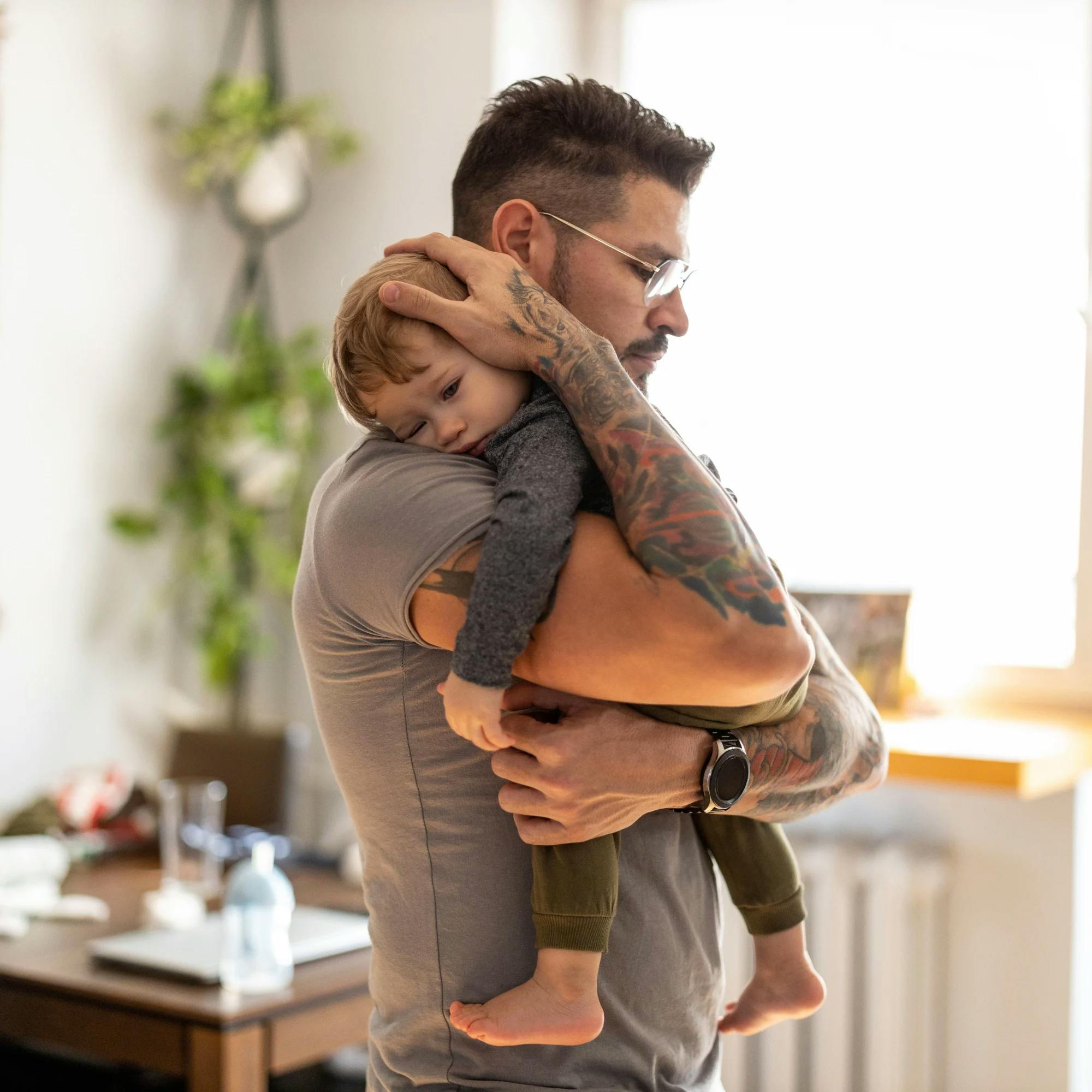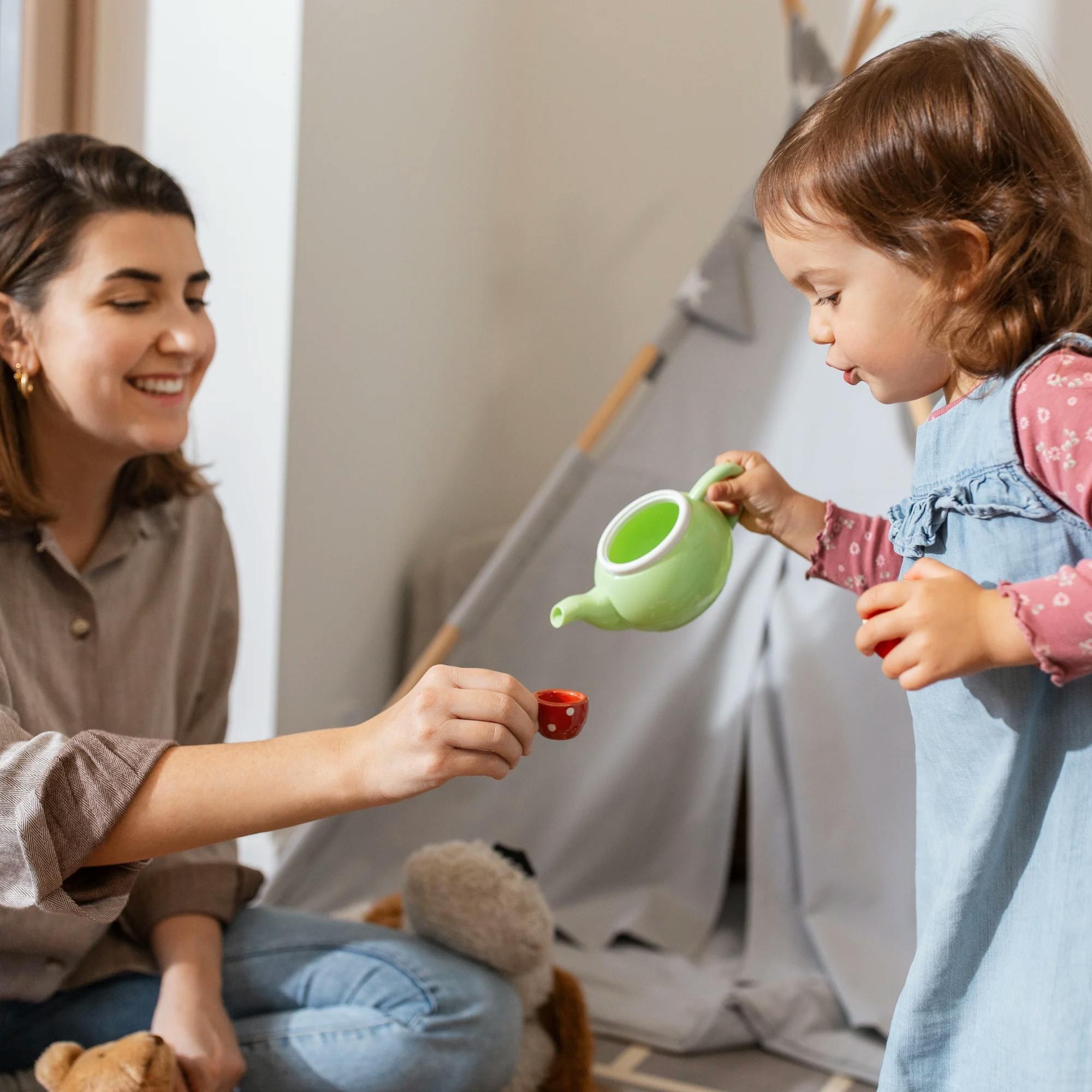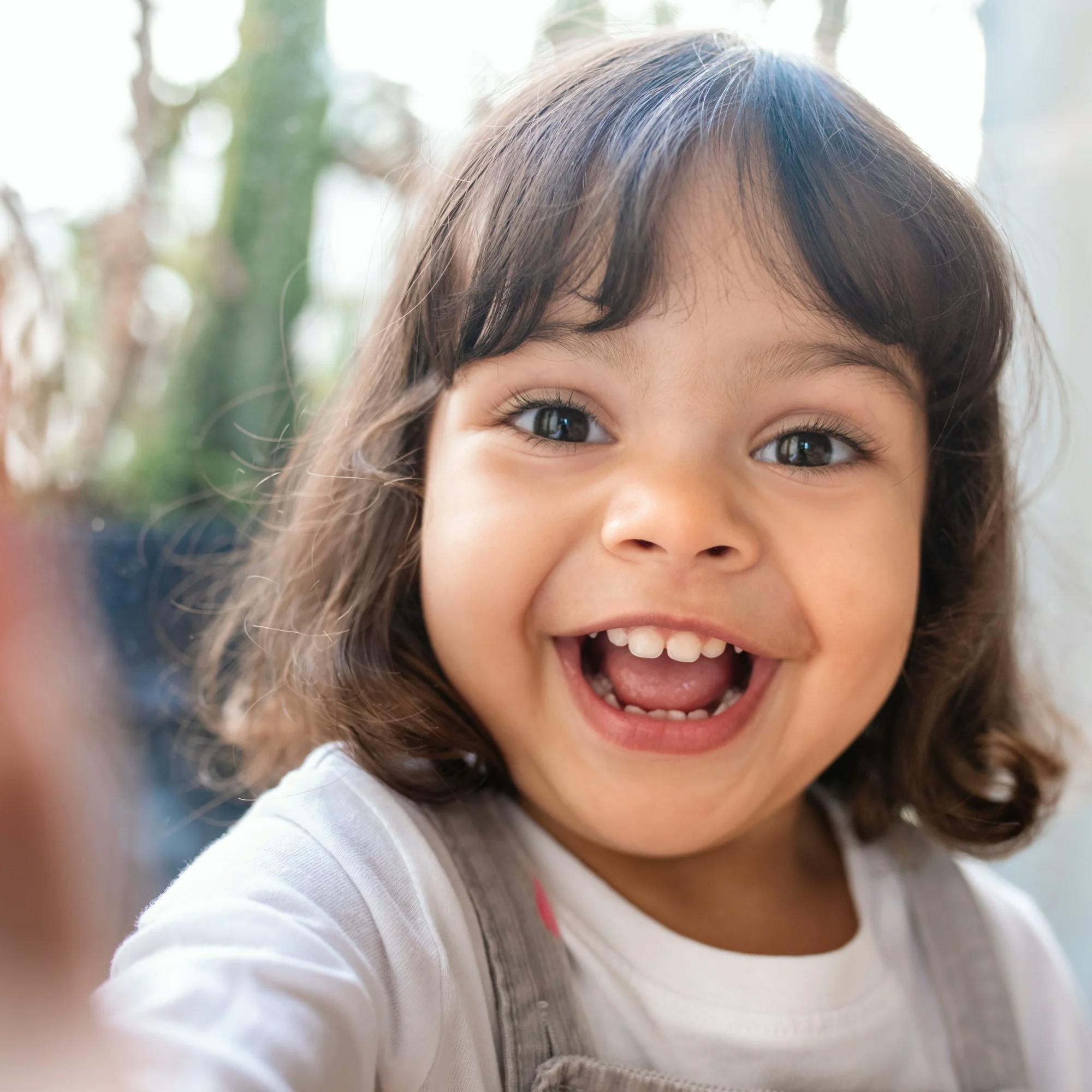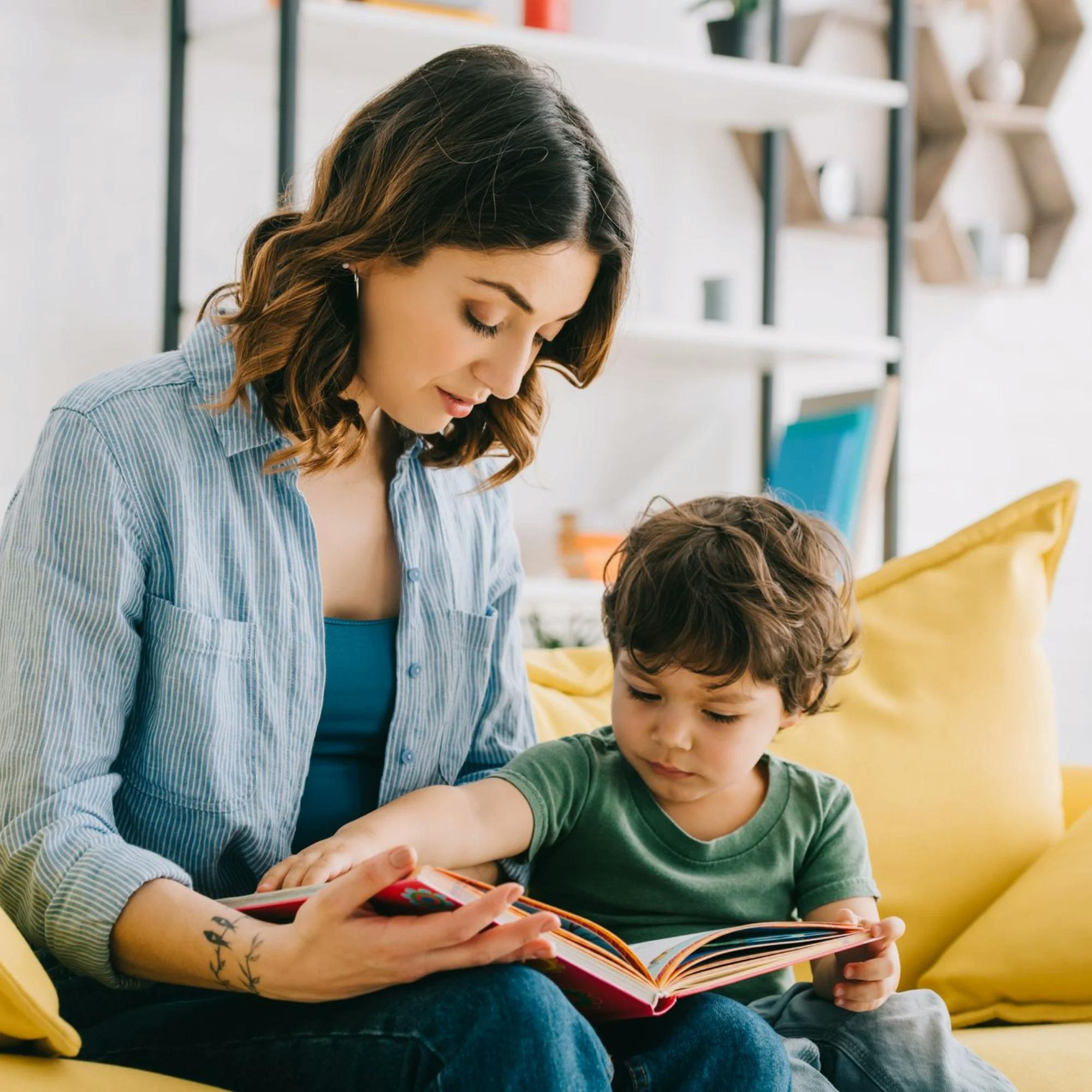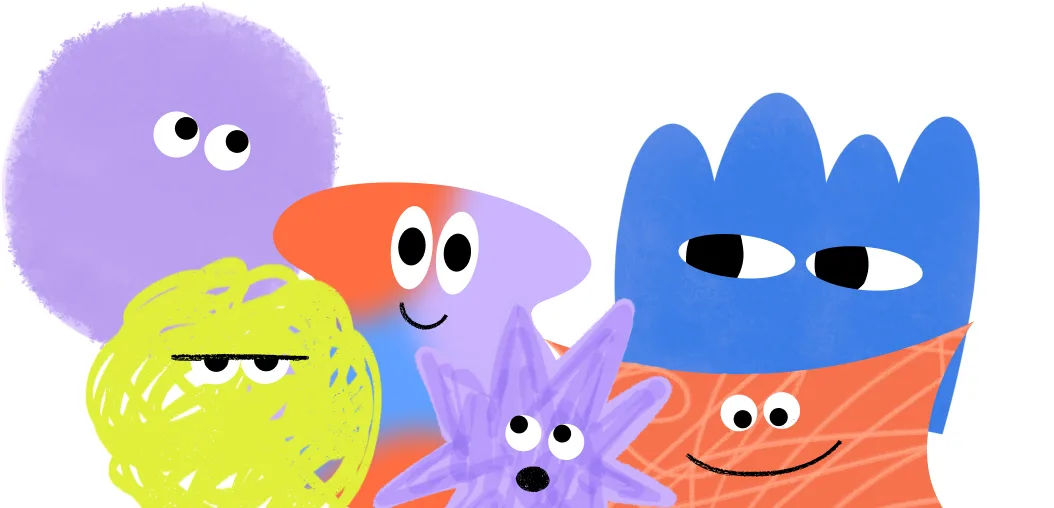At age 3, your child’s imagination is blooming, and the right toys can help their language skills grow right along with it. The best toys for 3-year-olds aren’t just fun; they also support learning, communication, and connection.
By age 3, children are typically using longer sentences, asking and answering questions, and understanding more of what’s said to them. Their speech should be understood most of the time by family members. They’re also beginning to play with others. This is a big year for language and social growth!
Our speech therapists have worked with thousands of toddlers and preschoolers around the country. In this article, our experts recommend educational toys for 3-year-olds that promote speech, play, and connection. Whether you're looking for gift ideas or just want to support your child’s communication skills, we’ve got you covered.
Knowledge is power
Take 5 minutes to check your child’s speech milestones with our free online screener.
 Start the screener
Start the screenerWhy should you play with your child?
First of all: Play isn’t just fun. It’s one of the best ways to help your child learn to communicate! When you play together, you create natural opportunities for your child to talk, ask for help, and use new words. These everyday moments help build their language skills in a relaxed, low-pressure way.
Plus, play keeps things exciting and motivating. Learning something new, like a sound or a word, can feel hard on its own. But when it’s part of a game or a favorite activity, your child is more likely to stay engaged and have fun while learning.
5 toys that help 3-year-olds learn to talk
Here are some of the best toys for 3-year-olds that support speech and language development.
1 Play food sets
Use pretend food to “cook” a meal or host a picnic with your child. These toys are great for expanding imagination and vocabulary. Practice:
Action words, like cut, stir, cook, and eat
Descriptive words, like hot, cold, yummy, and big
Item names, like banana, pizza, and plate
Pretend play routines, like “First we cook, then we eat.”
Following directions, like “Put the apple on the plate” or “Give me something red”


2 Stomp rockets
Stomp rockets are exciting and great for outdoor play. They also create chances for simple routines and listening skills. Practice:
Verbal routines, like “Ready, set, GO!”
Action words, like stomp, fly, and catch
Descriptive words, like high, fast, and loud
Following directions, like “Put it on the stand” or “Wait your turn.”

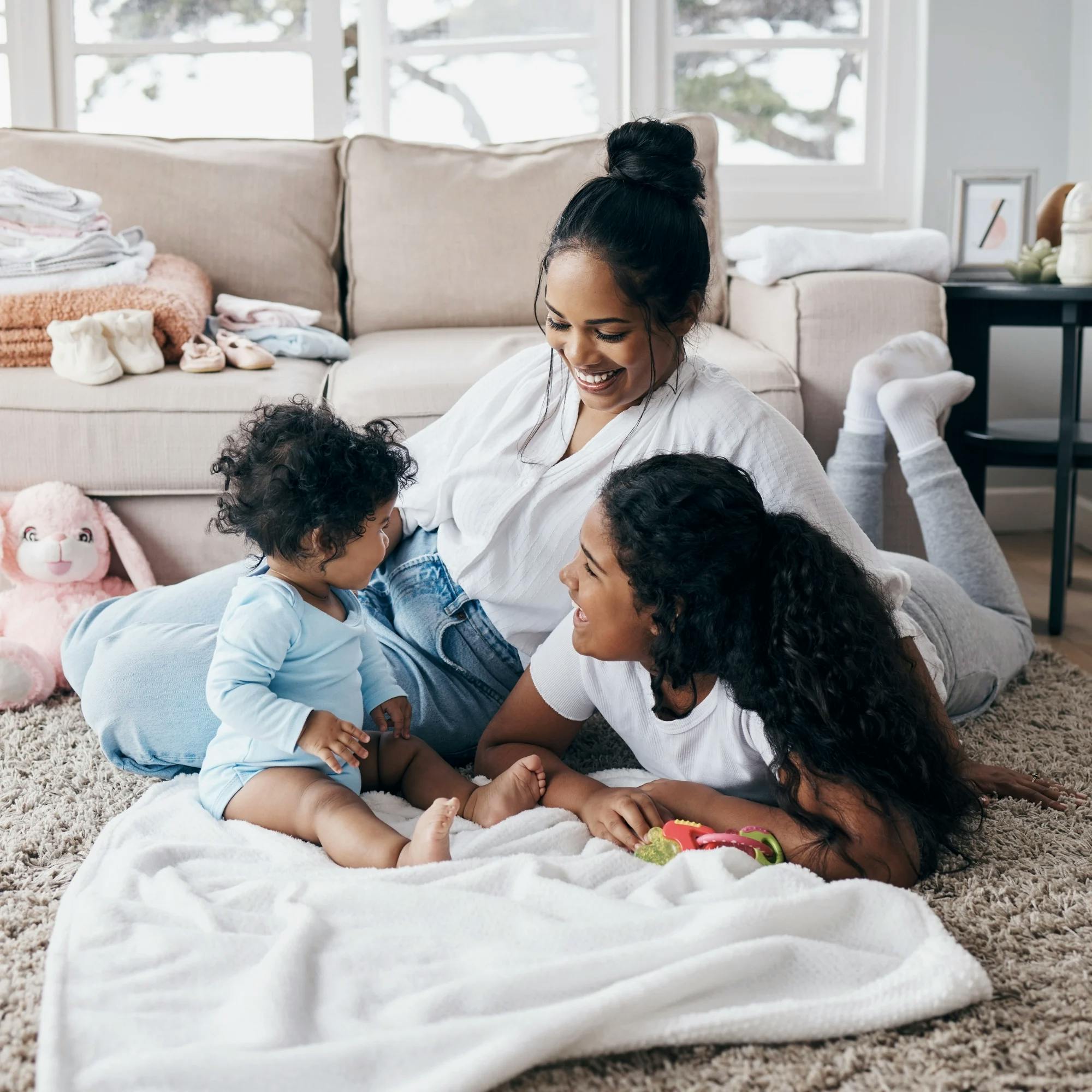
3 Play farm sets
Playing with a toy farm gives your child chances to learn animal names, imitate sounds, and act out little stories. Practice:
Animal names and noises, like “cow says moo!”
Action words, like run, jump, and sleep
Location words, like in, on, and under
Storytelling, like “The horse went into the barn and took a nap.”
4 Baby dolls
Pretending to care for a baby doll helps children learn about daily routines and feelings, while building their language. Practice:
Action words, like feed, wash, hug, and sleep
Descriptive words, like wet, dry, and tired
Emotions, like happy, sad, and mad

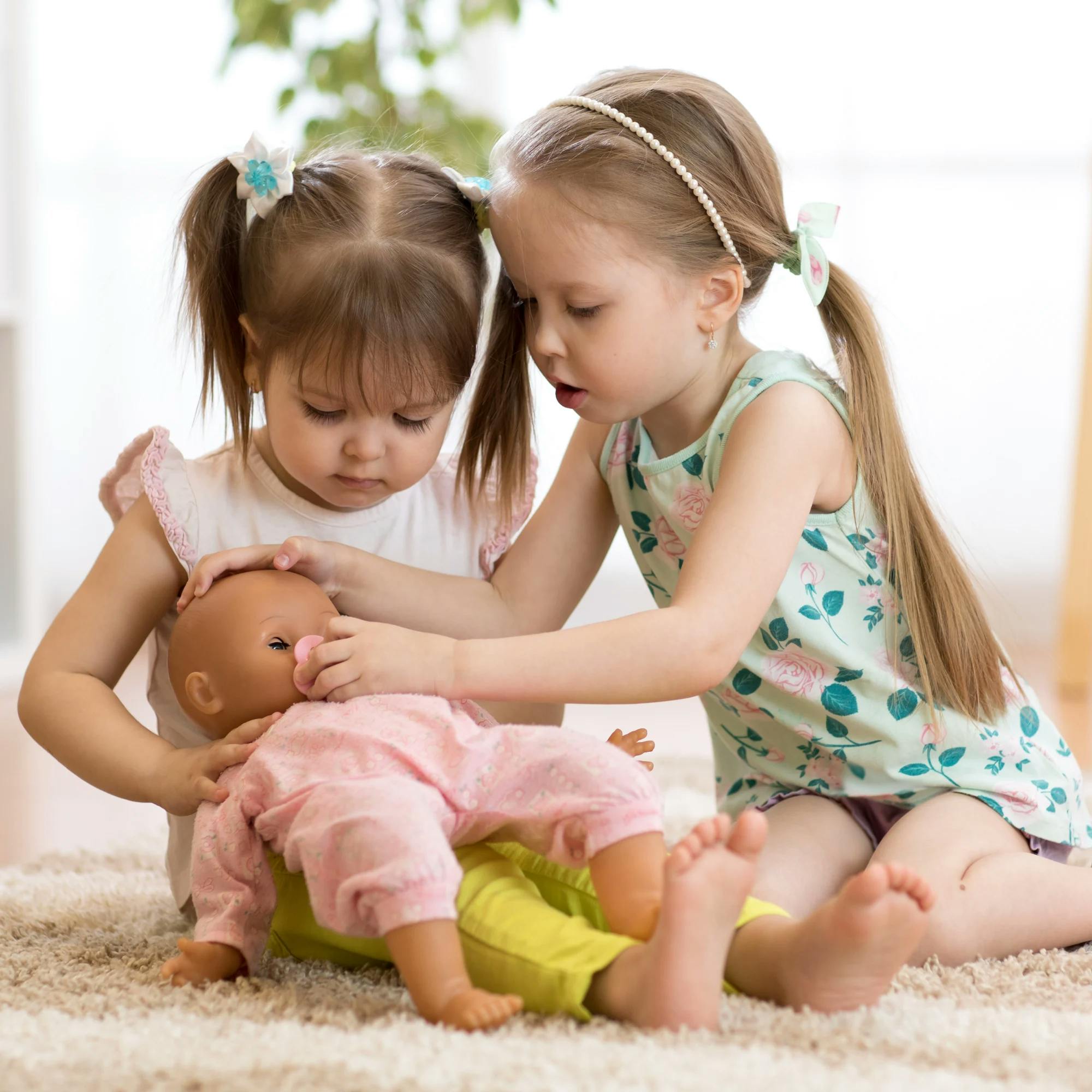
5 Chunky puzzles
Large-piece puzzles are perfect for little hands and growing minds. They encourage problem-solving and communication. Practice:
Item names, like truck, fish, or apple
Action words, like turn, fit, and slide
Location words, like in, next to, and on top
Asking for help, like “Help me!” or “Where does this go?”
Playing outside with your 3-year-old
Playing outside offers tons of chances to build language. On the swing, try creating a fun routine: Say, “Ready, set…” and pause. Wait for your child to say or sign “go” or “more” before you give them a big push. Repeat this a few times, and soon they’ll join in!
You can also model short phrases like “Swing high!” or “Go fast!” This turns a simple activity into a language-rich moment. Even if your child doesn’t repeat after you, they’re still hearing your words and soaking them in.
You can also try a playful activity like an obstacle course. You might say, “Run to the tree! Go around it once! Then go down the slide!” You can set up an obstacle course indoors, too, and have your child crawl under the table, hop over a pillow, etc. This builds skills in:
Listening and following directions
Understanding action words, like crawl, jump, and run
Basic concepts, like over, under, and around
Plus, your child gets to move their body and have fun with you. It’s a win-win for bonding and learning!


Best books to read with your 3-year-old
Reading with your 3-year-old is a powerful way to build their language skills and their love of books! Preschoolers enjoy interactive stories, silly rhymes, and books with strong characters and emotions. They’re also ready to talk more about what they see and hear, so don’t be afraid to pause and ask questions or add fun comments.
Try sitting face-to-face with your child and pointing to the pictures as you read. Ask simple questions like, “What do you see?” or “What do you think will happen next?” If your child makes a comment or points to something, join in and talk about it!
Here are some of our favorite books for 3-year-olds and how you can use each one to build language:
Practice verbal routines: “Don’t push the button… uh oh!”
Use action words: push, wiggle, shake
Model emotions: “Look, he’s surprised!” or “He’s being silly!”
Encourage predictions: “What do you think will happen if we push it again?”
Use descriptive language: “That’s a silly hiccup!” or “He’s a big, bouncy hippo.”
Talk about cause and effect: “He hiccupped and bumped into them!”
Act out actions: Pretend to hiccup, trip, or run
Label emotions: happy, sad, angry, calm
Use descriptive words: “Yellow is bright and sunny!”
Ask questions: “How does the monster feel now?”
Relate to your child: “What makes you feel green (calm)?”
Richard Scarry’s Cars and Trucks and Things That Go
Label and describe items: fire truck, dump truck, fast car
Practice location words: “Look! The pig is under the umbrella.”
Build vocabulary: “This is a cement mixer. It mixes concrete.”
Play “I spy” games to encourage speech: “Can you find the banana car?”
Poke-a-Dot: Who’s in the Ocean?
Use number words: “One fish, two fish…”
Practice animal names and sounds: octopus, dolphin, crab
Encourage requesting: “You want to poke again? Say, ‘More!’”
Follow directions: “Poke the jellyfish. Now the seahorse!”
Reading together doesn’t need to be long or complicated, just fun and interactive. A few minutes a day can make a big difference in your child’s language development.
Want to see some of these tips in action? Check out this video, where one of our speech therapists demonstrates how to bring stories to life using the book Where’s Spot?
Play with household items with your 3-year-old
You don’t need fancy toys to build your child’s language skills. Three-year-olds are curious, creative, and full of imagination. Your home is their playground! As you play together, talk about what you’re doing, ask simple questions, and use fun words to keep the conversation going.
Try these playful ideas to boost language and connection with everyday items:
Pretend to cook together with real or toy kitchen tools. Narrate what you're making: “I’m stirring soup. Now I’m pouring it in the bowl!”
Sort laundry by color or size and talk about the clothes: “This is Daddy’s BIG sock!”
Build towers out of containers, boxes, or blocks and knock them down while yelling “CRASH!”
Go on a “treasure hunt” around the house. Say things like: “Let’s find something soft!” or “I see something red…do you?”
Use a blanket for pretend play: turn it into a superhero cape, a fort, or a picnic blanket.
Simple pretend play like this encourages storytelling, turn-taking, problem-solving, and lots of vocabulary practice.
How many toys does your 3-year-old need?
While your 3-year-old might have fun with kitchen spoons or boxes, it’s easy to feel like you also need a roomful of toys. But in reality, less is often more. Research shows that fewer toys can lead to longer attention spans, more creativity, and deeper, more meaningful play.
Instead of offering your child lots of choices, rotate toys and keep a few favorites out at a time. This encourages your child to explore more, talk more, and play in new ways with familiar objects.

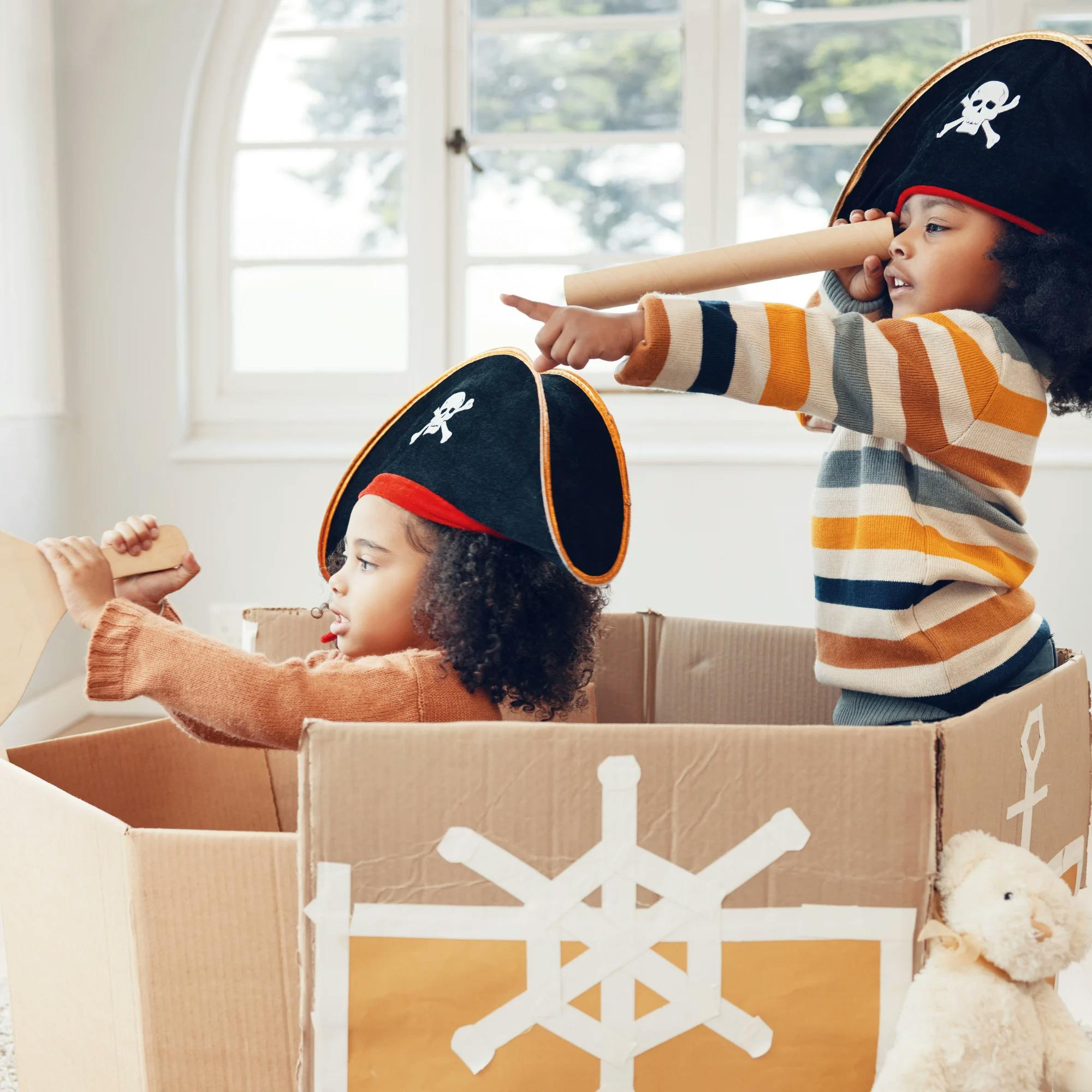
More expert tips for parents of 3-year-olds
Remember, you don’t need to plan perfect activities or buy special materials. With simple daily interactions (such as reading a book or pretending to cook), you’re already giving your 3-year-old the tools they need to grow their language.
Looking for more ideas or support?
Learn about the communication milestones expected for 3-year-olds in this article and this video
Check out our Instagram to see simple playtime strategies in action
Take our easy online screener to see if your child in on track with their speech and language
How Expressable Can Help
Concerned your child isn't reaching age-expected milestones? Looking for communication support from a professional? Expressable is a national online speech therapy practice serving children and adults. We treat all major areas of communication and feeding, offer flexible hours including evenings and weekends, and accept most major health insurance plans. We’re proud to have earned more than 3,000 5-star reviews from our clients (4.9/5 average).
Our therapy model is centered on parent and caregiver involvement. Research proves that empowering caregivers to participate in their loved one’s therapy leads to better outcomes. That’s why we combine live, 1-on-1 speech therapy with personalized education and home practice activities for faster progress.
Communication is more than words. It’s how we share how we feel and show who we are. We’re here to help you or your child do just that.

 Alexis Irazoque, M.S., CCC-SLP
Alexis Irazoque, M.S., CCC-SLP


